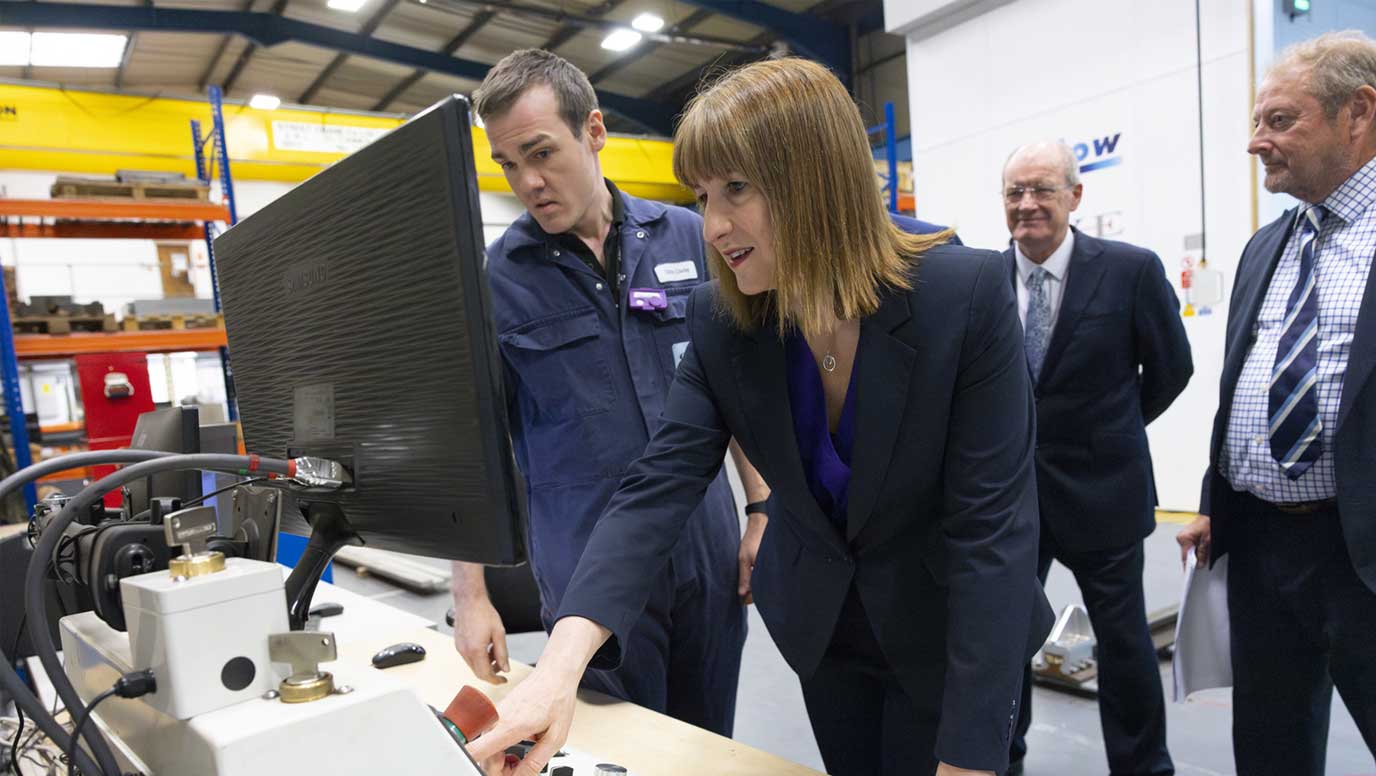Cambridge Vacuum Engineering showcases tech to UK Government ministers

The duo visited Cambridge Vacuum Engineering in Waterbeach to see Ebflow™ welding technology in action which can help accelerate production of small modular reactors.
The electron beam technology has the potential to transform manufacturing timelines and costs for the UK’s next-generation nuclear power infrastructure.
The visit came ahead of the Government announcing investments in Sizewell C and the results of its’ Great British Nuclear (GBN) Small Modular Reactor (SMR) competition – an initiative to select and support the deployment of SMR reactors across the UK.
SMRs have a critical role to play in the UK’s transition to a low carbon economy. Smaller than conventional nuclear power station reactors, SMRs can be constructed in modular units, allowing for phased construction and deployment, potentially reducing costs and construction time.
Ebflow, an advanced electron beam (EB) welding technology, developed by the team at CVE, is proven to transform the speed at which nuclear pressure vessels can be built. In a trial conducted by Sheffield Forgemasters (announced in early 2024), Ebflow™ cut the time needed to weld a demonstrator vessel for an SMR from more than a year to less than 24 hours.
On site at CVE, the Chancellor and Mr Miliband initiated an Ebflow™ test weld, while speaking to CVE staff about the development of the technology.
Bob Nicolson, Managing Director of Cambridge Vacuum Engineering said: “Ebflow™ was developed to enable major cost savings and efficiencies across aerospace, automotive, defence and renewable energy welding projects. In the nuclear sector, Ebflow™ has the potential to reshape the future of reactor production, enabling the fast, efficient production of core components needed to support the country’s transition to a low carbon economy and build a more resilient and flexible energy system.
“We welcome the Government’s decision to invest in Sizewell C and the appointment of Rolls-Royce SMR as preferred bidder to build the country’s first small modular reactors.”

